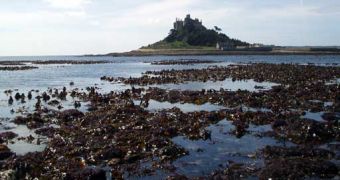Clime can be modeled by living organisms. For instance, it is a well known fact that more rain falls over a forest than over other areas. Termites and ruminants (cows and sheep) release huge amounts of methane, a powerful greenhouse effect gas, in the atmosphere. A new research published in the Proceedings of the National Academy of Science (PNAS) and carried out at The University of Manchester shows that large quantities of seaweed in coastal areas can also impact the climate.
Large brown seaweeds (called kelp), when under stress factors, expel large amounts of inorganic iodine into the coastal air, causing cloud formation. The algae store iodine as iodide (negatively charged ions). The iodide acts like an antioxidant in living cells.
"When kelp experience stress, for example when they are exposed to intense light, desiccation or atmospheric ozone during low tides, they very quickly begin to release large quantities of iodide from stores inside the tissues. These ions detoxify ozone and other oxidants that could otherwise damage kelp and, in the process, produce molecular iodine. Our new data provide a biological explanation why we can measure large amounts of iodine oxide and volatile halocarbons in the atmosphere above kelp beds and forests. These chemicals act as condensation nuclei around which clouds may form." said lead author Dr Frithjof K?pper from the Scottish Association for Marine Science.
"The findings are applicable to any coastal areas where there are extensive kelp beds. The kelps need rocky intertidal zones to prosper - sandy beaches aren't very good," said co-author Dr Gordon McFiggans, an atmospheric scientist from The University of Manchester's School of Earth, Atmospheric and Environmental Sciences (SEAES).
"The increase in the number of cloud condensation nuclei may lead to 'thicker' clouds. These are optically brighter, reflecting more sunlight upwards and allowing less to reach the ground, and last for longer. In such a cloud, there are a higher number of small cloud droplets and rainfall is suppressed, compared with clouds of fewer larger droplets. The increase in cloud condensation nuclei by kelps could lead to more extensive, longer lasting cloud cover in the coastal region - a much moodier, typically British coastal skyline," added McFiggans.
The study also shows that large quantities of iodide are released from the tissues of the brown algae into sea water when they are attacked by pathogens. These algae appear to be a crucial player in the global biogeochemical cycle of iodine and in the elimination of lower ozone atmosphere, which is harmful for human health.

 14 DAY TRIAL //
14 DAY TRIAL //